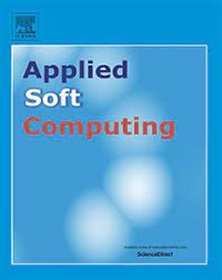Evaluation of the anti-disturbance capability of fMRI-based spiking neural network based on speech recognition
IF 7.2
1区 计算机科学
Q1 COMPUTER SCIENCE, ARTIFICIAL INTELLIGENCE
引用次数: 0
Abstract
The exterior electromagnetic noise can degrade the performance of neuromorphic hardware based on brain-inspired model. Therefore, enhancing the robustness of a brain-inspired model is a critical issue. However, the topology of a brain-inspired model lacks bio-plausibility. The purpose of this paper is to enhance the anti-disturbance capability of brain-inspired model under exterior electromagnetic noise by improving its bio-plausibility. In this paper, we propose a new spiking neural network (SNN) as a brain-inspired model called fMRI-SNN, in which the topology is constrained by functional magnetic resonance imaging (fMRI) data from the human brain, the nodes are Izhikevich neuron models, and the edges are synaptic plasticity models (SPMs) with time delay co-regulated by excitatory synapses and inhibitory synapses. Then, taken speech recognition (SR) as a case study, the recognition performance of fMRI-SNN is certified. To evaluate its anti-disturbance capability, the SR accuracy of fMRI-SNN under exterior electromagnetic noise is investigated, and is compared with SNNs with alternative topologies. To reveal its anti-disturbance mechanism, the neuroelectric characteristics, adaptive adjustment of synaptic plasticity, and dynamic topological characteristics of fMRI-SNN under exterior electromagnetic noise are discussed. The results indicate that the SR accuracy of fMRI-SNN under exterior electromagnetic noise is higher than that of SNNs with alternative topologies, and our discussion elucidates its anti-damage mechanism. Our results prompt that the brain-inspired model with bio-plausibility can enhance its robustness.
基于fmri的语音识别尖峰神经网络抗干扰能力评价
外部电磁噪声会降低基于脑启发模型的神经形态硬件的性能。因此,增强脑启发模型的鲁棒性是一个关键问题。然而,大脑启发模型的拓扑结构缺乏生物合理性。本文的目的是通过提高仿生脑模型的生物合理性来增强其在外界电磁噪声下的抗干扰能力。本文提出了一种新的峰值神经网络(SNN)作为脑启发模型,称为fMRI-SNN,其拓扑结构受人脑功能磁共振成像(fMRI)数据约束,节点为Izhikevich神经元模型,边缘为突触可塑性模型(SPMs),延时由兴奋性突触和抑制性突触共同调节。然后,以语音识别为例,验证了fMRI-SNN的识别性能。为了评估其抗干扰能力,研究了fMRI-SNN在外部电磁噪声下的SR精度,并与具有其他拓扑结构的snn进行了比较。为了揭示其抗干扰机制,本文讨论了外部电磁噪声下fMRI-SNN的神经电特性、突触可塑性的自适应调节以及动态拓扑特性。结果表明,fMRI-SNN在外部电磁噪声下的SR精度高于具有其他拓扑结构的snn,我们的讨论阐明了其抗损伤机制。我们的研究结果提示,具有生物合理性的脑启发模型可以增强其鲁棒性。
本文章由计算机程序翻译,如有差异,请以英文原文为准。
求助全文
约1分钟内获得全文
求助全文
来源期刊

Applied Soft Computing
工程技术-计算机:跨学科应用
CiteScore
15.80
自引率
6.90%
发文量
874
审稿时长
10.9 months
期刊介绍:
Applied Soft Computing is an international journal promoting an integrated view of soft computing to solve real life problems.The focus is to publish the highest quality research in application and convergence of the areas of Fuzzy Logic, Neural Networks, Evolutionary Computing, Rough Sets and other similar techniques to address real world complexities.
Applied Soft Computing is a rolling publication: articles are published as soon as the editor-in-chief has accepted them. Therefore, the web site will continuously be updated with new articles and the publication time will be short.
 求助内容:
求助内容: 应助结果提醒方式:
应助结果提醒方式:


